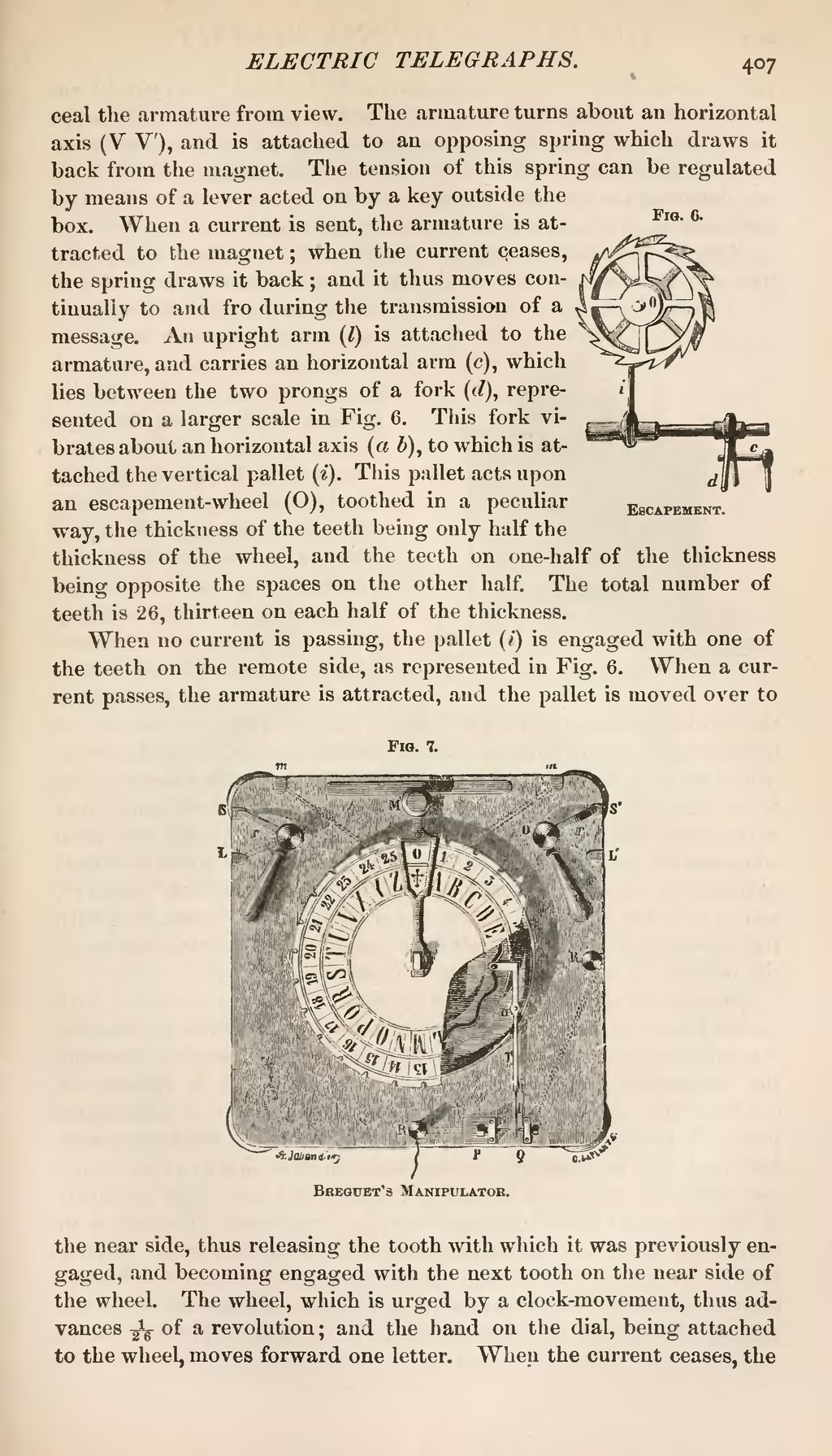hyphenated word was joined on the previous page because of the intervening image.—Ineuw talk 06:07, 16 December 2013 (UTC) (Wikisource contributor note)
the armature from view. The armature turns about an horizontal axis (V V'), and is attached to an opposing spring which draws it back from the magnet. The tension of this spring can be regulated  Fig. 6.Escapement by means of a lever acted on by a key outside the box. When a current is sent, the armature is attracted to the magnet; when the current ceases, the spring draws it back; and it thus moves continually to and fro during the transmission of a message. An upright arm (l) is attached to the armature, and carries an horizontal arm (c), which lies between the two prongs of a fork (d), represented on a larger scale in Fig. 6. This fork vibrates about an horizontal axis (a b), to which is attached the vertical pallet (i). This pallet acts upon an escapement-wheel (O), toothed in a peculiar way, the thickness of the teeth being only half the thickness of the wheel, and the teeth on one-half of the thickness being opposite the spaces on the other half. The total number of teeth is 26, thirteen on each half of the thickness.
Fig. 6.Escapement by means of a lever acted on by a key outside the box. When a current is sent, the armature is attracted to the magnet; when the current ceases, the spring draws it back; and it thus moves continually to and fro during the transmission of a message. An upright arm (l) is attached to the armature, and carries an horizontal arm (c), which lies between the two prongs of a fork (d), represented on a larger scale in Fig. 6. This fork vibrates about an horizontal axis (a b), to which is attached the vertical pallet (i). This pallet acts upon an escapement-wheel (O), toothed in a peculiar way, the thickness of the teeth being only half the thickness of the wheel, and the teeth on one-half of the thickness being opposite the spaces on the other half. The total number of teeth is 26, thirteen on each half of the thickness.
When no current is passing, the pallet (i) is engaged with one of the teeth on the remote side, as represented in Fig. 6. When a current passes, the armature is attracted, and the pallet is moved over to
the near side, thus releasing the tooth with which it was previously engaged, and becoming engaged with the next tooth on the near side of the wheel. The wheel, which is urged by a clock-movement, thus advances 1⁄26 of a revolution; and the hand on the dial, being attached to the wheel, moves forward one letter. When the current ceases, the


